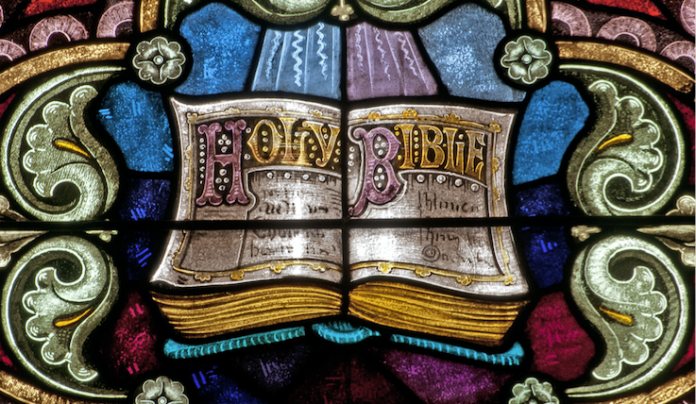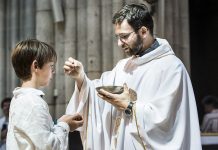
Taking Time to Take your Students Deeper
MARLON DE LA TORRE
St. John Damascene once commented that “prayer is the raising of one’s mind and heart to God.” This beautiful definition provides us with a clear premise toward praying to God. Yet in all honesty it may be the last thing I’m thinking of when trying to get the attention of my students at the start of class.
Our tendency too often is to welcome children to class, quiet them down, and then begin with a rote prayer (such as the Our Father) — but without preparation, purpose, or explanation as to why class begins this way. Instead we should give children an opportunity to pray and discover the importance of having a personal relationship with Jesus Christ. Being intentional in our approach to prayer with our students will help orient young hearts and minds toward him.
Preparation and Setting
There are many ways to help initiate a child’s walk with God in prayer. Most of us have introduced prayer in the classroom using the Sign of the Cross, a crucifix, the Our Father, the Hail Mary, Glory Be, the Rosary, or praying with the saints. Yet the stark reality is that when we introduce these prayers, children may not receive adequate formation about how to apply them in their daily lives. This is where sound instruction becomes a most important step for a catechist to take in preparing for prayer in the class.
A simple way of opening the hearts of your students toward Christ in prayer is by adding some form of sacred music as they enter the classroom. Couple that with a sacred space consisting of a simple altar with the liturgical color of the season, a crucifix, a candle, and a picture of a saint. Together, these offer a setting to prepare students for prayer.
Introducing Lectio Divina
A good way of introducing prayer to your students can be found in lectio divina. The premise of lectio divina is meditating on the Word of God and immersing yourself in the mysteries of Christ through sacred Scripture. (A sound substitute for sacred Scripture is the Catechism of the Catholic Church by way of meditating on a key doctrine of the faith.)
The outline of lectio divina is as follows:
LECTIO (reading): Select a specific passage of Scripture, or teaching in the Catechism that you would like to invite your class to meditate on.
MEDITATIO (meditation): Once you’ve selected the specific passage and explained what it means, assist your students in meditating. What words or phrases stand out to the reader? What strikes the heart?
ORATIO (prayer): After careful meditation, the next step is to call upon the Holy Spirit for guidance in praying on the passage chosen. This involves an intentional act of prayer. Recite the passage vocally or quietly in an act of prayer and devotion.
CONTEMPLATIO (contemplation): In this final step, ask your students to respond to God’s call about how to live out their faith and discover what God is asking of them.
Each stage of the lectio divina is meant to draw us deeper into communion with Christ by either meditating on his Word or the fruits of his Word found in the Catechism. A great benefit of applying this method in the classroom is that it minimizes distractions and provides the students with a genuine opportunity to pray. As St. John Damascene reminds us, we want our children to “raise their mind and heart to God.”

MARLON DE LA TORRE, MA, MEd, is the department director of evangelization and catechesis in the Diocese of Fort Worth, Texas. He is author of Screwtape Teaches the Faith and a contributor to Man Up! Becoming the New Catholic Renaissance Man.
This article was originally published in Catechist magazine, February, 2018.
Images credits:
Top: Nancy Bauer / Shutterstock 154303340
Bottom: JAROMIR CHALABALA/SHUTTERSTOCK




